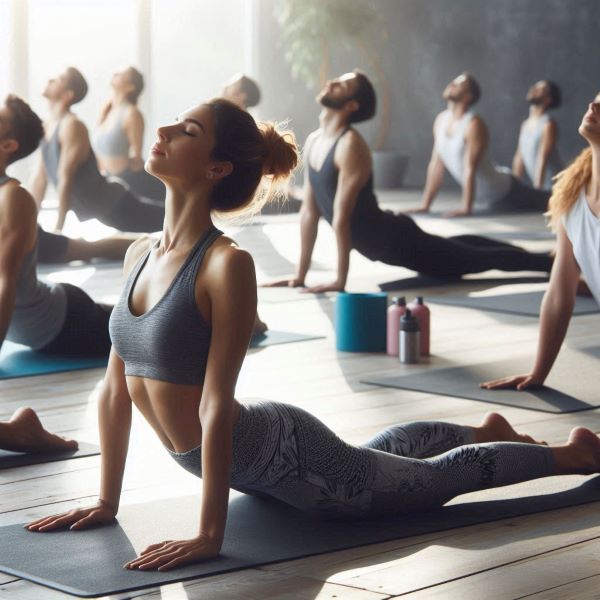Bhujangasana, known in English as the Cobra Pose, is a rejuvenating backbend yoga posture that stretches the spine, chest, and shoulders. Named after the Sanskrit word “Bhujanga” meaning “snake” or “serpent,” this pose mimics the raised hood of a cobra, symbolizing alertness and power.
History
Bhujangasana has been a part of traditional Hatha Yoga for centuries, with its origins deeply embedded in ancient Indian practices. It is frequently included in the Sun Salutation (Surya Namaskar) sequence and is praised for its ability to energize the body and mind. The pose has been depicted in ancient texts and sculptures, highlighting its long-standing significance in yoga practice.
How to Do Bhujangasana
To perform Bhujangasana correctly, follow these steps:
- Starting Position: Lie on your stomach with your legs extended and feet together, toes pointing out. Place your forehead on the mat.
- Hand Placement: Position your hands under your shoulders, keeping your elbows close to your body.
- Engage the Body: Press the tops of your feet and thighs into the mat. Engage your core muscles.
- Inhale and Lift: Inhale and gently lift your head, chest, and upper abdomen off the floor. Use your back muscles primarily and your hands lightly for support.
- Maintain the Position: Keep your elbows slightly bent and your shoulders away from your ears. Ensure your neck is in line with your spine, not straining forward.
- Hold the Pose: Hold the pose for 15-30 seconds, breathing deeply and evenly. Keep your gaze forward or slightly upward.
- Exhale and Release: Exhale and slowly lower your torso back to the mat. Turn your head to one side and rest your arms alongside your body.
Health Benefits
Regular practice of Bhujangasana offers numerous health benefits, including:
- Strengthening Muscles: Strengthens the spine, shoulders, and arms.
- Improving Flexibility: Stretches the chest, lungs, shoulders, and abdomen.
- Relieving Stress: Opens the heart and lungs, helping to relieve stress and fatigue.
- Stimulating Organs: Stimulates abdominal organs, aiding in digestion.
- Alleviating Pain: Helps to alleviate lower back pain by increasing spinal flexibility.
Who Should Do Bhujangasana
Bhujangasana is beneficial for most individuals, especially those who:
- Seek to improve their spinal flexibility and strength.
- Want to relieve stress and open their chest and lungs.
- Experience mild back pain and wish to strengthen their lower back muscles.
- Are looking to integrate a foundational backbend pose into their yoga practice.
Also, read: Quickly Learn all about Parshwa Konasana- Side Angle Posture
Who Should Not Do Bhujangasana
Certain individuals should take precautions or avoid practicing Bhujangasana:
- Those with severe back injuries or chronic back conditions.
- Individuals with carpal tunnel syndrome or wrist issues.
- Pregnant women should avoid deep backbends.
- People with recent abdominal surgeries or hernias.
Precautions to Take
When practicing Bhujangasana, keep these precautions in mind:
- Avoid overextending your back; use your core muscles to support the lift.
- Keep your elbows slightly bent to prevent straining your shoulders and wrists.
- Listen to your body and avoid any discomfort or pain in the lower back.
- If you experience dizziness or discomfort, leave the pose and rest.
References and Sources
By incorporating Bhujangasana into your regular yoga practice, you can enjoy its numerous benefits while developing strength, flexibility, and mental clarity. Always practice mindfully and consult with a yoga instructor if you have any health concerns.





